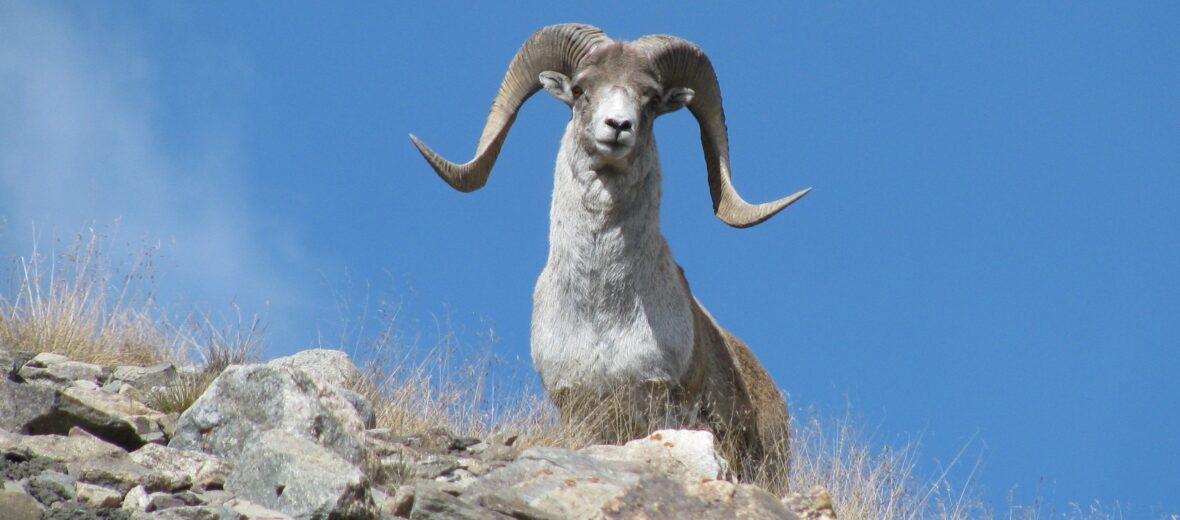
Touted as the largest known wild sheep in the world, the argali is an impressive animal to behold and a tough catch for their main predator. They can be found in central Asia, in the west from the Shanxi Province in China in the east to central Kazakhstan, and from the northern Altai Mountains to the Himalayas in the south. These sheep prefer to traverse the steep slopes of mountainous regions up to 3,000+ foot elevations. Argalis are listed as Near Threatened by the IUCN due to habitat loss and the introduction of domestic sheep that out compete for edible vegetation.
First the Stats…
Scientific name: Ovis ammon
Weight: Up to 400 lbs.
Length: Up to 6.6 feet
Height: Up to 4.4 feet
Lifespan: Up to 10 years
Now on to the Facts!
1.) Argali is the Mongolian word for ram.
2.) Being a highly gregarious animal, they can be seen roosting in gatherings of up to 100+ single sex groups.
3.) At higher and lower elevations they tend to graze on grasses, sedges, and forbs. At mid elevations they eat bushes and mesophyte grasses. Occasionally they will also consume fruit, when available.
4.) Their primary predator is the snow leopard.
5.) If water isn’t available they will consume saline soil.
But wait, there’s more on the argali!
6.) Males and females only come together during breeding season.
7.) During the rutt males and females will attempt to assert dominance over one another by ramming their horns together. Males do so to win breeding rights.
Did you know…?
The male’s horns weigh up to 13% of their body mass! Both males and females have horns, but the male’s horns are larger.
8.) Females birth 1 – 2 young each season.
Now a Short Argali Video!
Also, check out the Critter Science YouTube channel. Videos added frequently!
Want to suggest a critter for me to write about? Let me know here.



